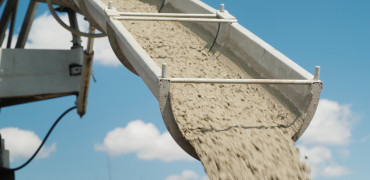With the built environment contributing to around 40% of the UK’s total carbon footprint scientists, researchers and writers have been calculating how to cool our planet by reducing the amount of greenhouse gas in the atmosphere.
The responsibility of the construction industry dictates that we need to harness a two pronged approach. To cut planet warming emissions from fossil fuels and at the same time combat this usage by sucking more carbon dioxide into the ground largely by photosynthesis.
Drawdown is a new way of thinking.
With so many applications and possibilities, seaweed is definitely a plant of the future.
Urgent need
There are several solutions which we are all familiar and all can be part of the puzzle.
For example by adopting a more plant-based diet and eating less beef we can cut huge amounts of carbon dioxide over future years.
We can also change the way we cool our offices and homes, we can use more sustainable building practices and harness new technologies.
We need to decarbonise our world in the shortest possible time and draw down the carbon that has already been released by the construction industry and others.
Ecosystems
Bio energy with carbon capture is the best known proposal to date and the greatest drawdown potential is the restoration of coastal habitats such as mangroves, salt marshes and seagrass beds.
These areas are capable of stashing carbon 40 times faster than tropical rain forests and land based plants.
Saltwater plants such as mangroves and sea grasses are considered ‘blue carbon’ ecosystems.
The secret to their carbon-storing success lies not in the plants but rather the rich muck they grow in.
As marine plants grow and die, their leaves, roots, stems and branches wind up buried in underwater sediments and its these low-oxygen sediments that can store carbon for decades or even longer.
Suck it up
Seaweeds are incredibly efficient when it comes to carbon, they are able to suck it up and use it to grow. Kelp for example can grow as much as 2 feet per day using this gas.
Seaweed beds can serve as significant carbon sink whilst also providing food, fodder, fuel and pharmaceutical products for all other industries – A new way to farm perhaps?
Although we have been harvesting wild seaweed in the UK for centuries the first seaweed farm in England is planned for the South Hams.
The project is aiming to grow two species, sugar kelp and oarweed, both of which are local and native. Seaweed grows exceptionally quickly and could be used to absorb CO2 very efficiently and on a vast scale.
The seaweed could also be harvested and processed to generate methane for electricity production or to replace natural gas.
If seaweed farms covered just 9% of the oceans’ surface they could produce enough biomethane to replace all of today’s needs for fossil fuels.
CO2 behaves very differently in marine sediments. It remains in liquid form and over time natural chemical processes turn it into a stable solid hydrate. Whilst seaweed farming is to be explored further scientist are pioneering farms in key locations all over the globe.
Even more benefits
Sheep and Cattle account for 15% of greenhouse emission but by supplementing livestock with less than 1% seaweed scientists have demonstrated that these emissions can be reduced by 60%.
Seaweed is a sustainable crop that can provide food for the masses whilst having a tiny ecological footprint. It grows quickly and thrives on Carbon dioxide unlike our planet. It can also be used as an organic fertiliser thanks to its natural minerals.
Seaweed can also be used as an emulsifying agent in everything from shampoo to toothpaste, pasta to ice cream.
It is a popular vegan alternative to gelatine and for the communities that harvest it, seaweed is a vast source of income that is ever increasing.
Pure sustainability
In addition to all these benefits of seaweed, it also has another great value to the construction industry - it can be used for insulation and bricks.
Scientists recently showed that seaweed can store considerable energy, 20% higher than wood, making seaweed a commercially viable insulation product.
This material is also virtually non-inflammable and resistant to mould, meaning it can be used without any chemical additives.
Could there be a time ahead where the building materials we use not only increase sustainability, whilst insulating and forming our homes, they also drawdown the CO2 we are actually producing inside the structure?
With so many applications and possibilities, Seaweed is definitely a plant of the future.
Kirsty Hammond is editor of Specifier Review




